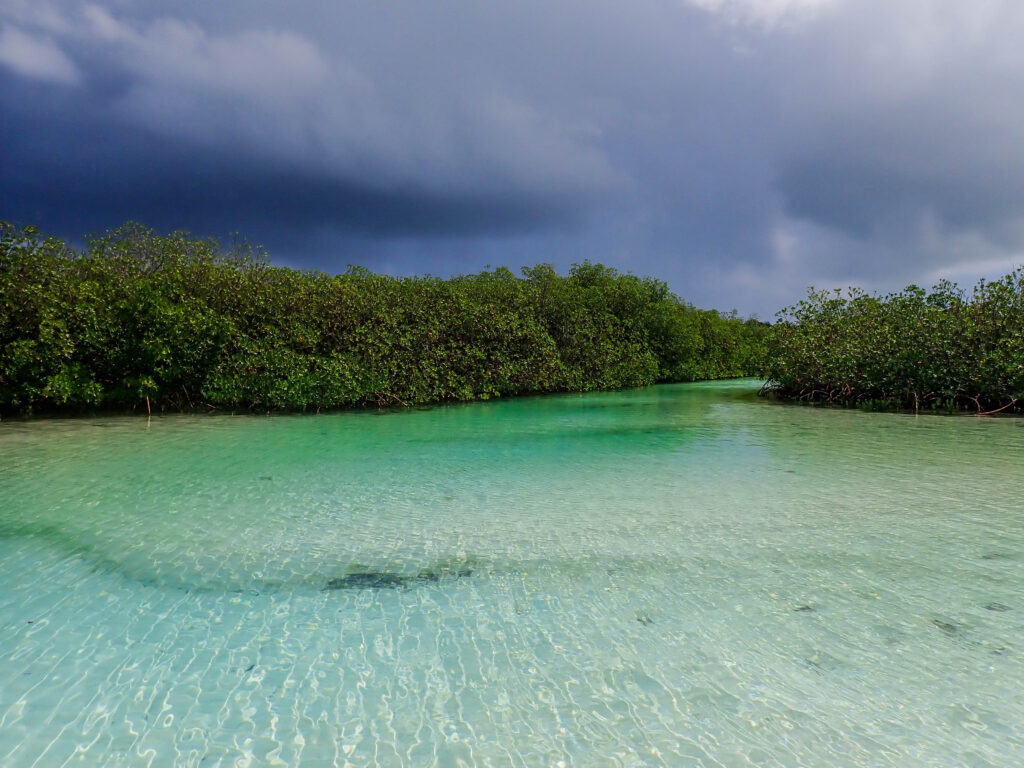photo: Justin Lewis
Bahamas Petroleum Company’s (BPC) offshore oil exploration, which began in December 2020, poses a greater threat to the US coastline than previously suggested by the project’s Environmental Impact Assessment.
“Our conclusion is that drilling in the location southeast of Cay Sal Bank on Cooper Block is dangerous for producing oil pollution for the Bahamas, Cuba, and the southeastern USA,” said Dr. Mitchell A. Roffer, a Florida-based oceanographer hired to review the EIA by the international conservation organization Bonefish & Tarpon Trust. “This includes impacts to coral reefs, fish and other organisms in the Florida Keys and southeastern United States.”
BPC was issued five licenses for offshore oil exploration by the Bahamian Government. These sites cover approximately 4 million acres and include one site only 60 miles southeast of Miami. Roffer evaluated the oceanography section of the EIA and concluded that the modeling output did not align with observations of oceanographers over recent decades.
“Ocean modeling output is not data but the result of numerical experiments using a variety of inputs,” Roffer said. “My experience with studying the ocean for years is that direct observations provide more accurate and reliable information.”
Roffer states that currents in the Santaren Channel and Old Southern Channel, both of crucial concern given their proximity to the first well, are northward flows, not southerly as presented in the EIA. Additionally, the potential flow of an oil-water mixture along the Old Bahamas Channel and Nicholas Channel would be westward, suggesting that any oil-water mixture from a spill in this location would travel over the living coral reefs of northeastern Cuba and then westward via the Gulf Stream.
“This puts the Florida Keys and the southeastern US at significant risk even without strong winds,” Roffer concludes. “With strong winds from the southeast, the oil-water mix is very likely to easily cross over the Gulf Stream over the coral reefs in the Florida Keys and South Florida.”
In addition to the differences noted by Roffer between observation and modeling used in the EIA, he points to 2010 model output included in the EIA that does, in fact, show a much stronger current toward the west, further bolstering his conclusion.
“This model output shows that the risk of an oil-water mixture is greater. My experience indicates that often there are clockwise eddy features in the vicinity of where the Santaren Channel meets the Nicholas Channel. These eddy features have also been documented in research by other scientists.”
Bonefish & Tarpon Trust, an international organization focusing on the conservation of the nearshore marine environment, retained Roffer for this review. BTT is concerned about the impacts of an oil spill to the pristine flats environments of the Bahamas as well as the fragile coastal ecosystems of South Florida and the Keys.
“We are concerned about the devastating impacts an oil spill will have on the flats species and habitats of the Bahamas as well as on the people who make their livelihood on these waters, especially the fragile mangrove flats. Once oil reaches these flats there is no recovery or restoration, the oil is there for good,” said BTT President and CEO Jim McDuffie. “Our concerns are further amplified by an Environmental Impact Statement that minimizes the risks to South Florida and the Keys and a woefully insufficient disaster recovery plan.”




